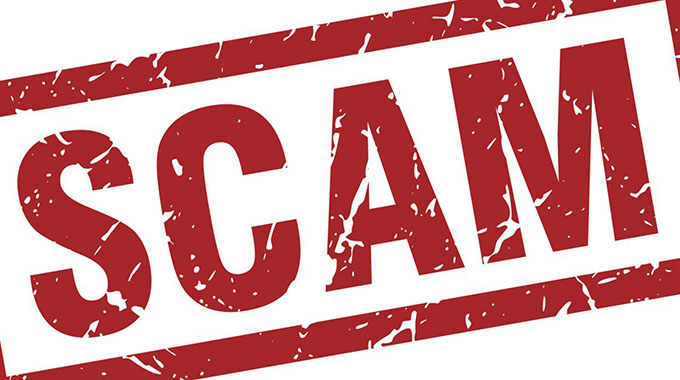Region’s biggest steel plant roars to life

Fungi Kwaramba and Kudakwashe Mugari
A NEW town is set to be born between Mvuma-Chivhu and Manhize where Tsingshan Group Holdings, a Fortune 500 listed company is set to build a world class iron and steel plant that will also come with ferrochrome furnaces.
Already, siting for a dam along Munyati River, urban planning, logistical and other infrastructural development projects are underway in what is the fruition of one of President Mnangagwa’s flagship investment programmes under his Zimbabwe is open for business mantra.
The project will be carried by Tsingshan’s subsidiary, Dinson Iron and Steel Company which will be the largest steel plant in Southern Africa.
The US$1 billion investment project will have an annual turnover of US$1,5 billion from the processing plant and iron ore mine from next year.
Equipped with a 1,5km-by-600-metre carbon and steel plant, an iron ore mine, and a ferrochrome plant, the project will have a capacity of 1,2 million tonnes a year, while between 4 000 and 5 000 people will benefit through employment across value chains.
The project, which was almost scuppered by G40 functionaries in 2014 as a powerful figure allegedly demanded a 60 percent shareholding in the US$10 billion investment that Tsingshan had earmarked for Zimbabwe, comes at a time when the country’s economy is on a rebound.
Back then Tsingshan Group, whose annual revenue in 2018, according to Forbes exceeded US$28 billion, took their money to Indonesia and only returned to Zimbabwe after the birth of the Second Republic under President Mnangagwa’s rule.
In an interview, former Norton legislator and Zimbabwean Ambassador to China, Mr Chris Mutsvangwa, who has followed the project since its inception, said President Mnangagwa’s vision is on display as Tsingshan, whose chairman is Mr Xiang Guangda, transforms Mvuma, Chivhu and Manhize.
“Mr Xiang Guangda was already an investor in Selous and wanted to expand in Zimbabwe but was turned down because an influential figure in G40 wanted 60 percent of the company under the Indigenisation Act. That explains why the first thing that President Mnangagwa did when he came into power was to repeal the Indigenisation Act,’’ he said.
While he was Vice President, President Mnangagwa in 2016 went to China to revive the project but was undone by the G40 elements who stopped some of the members of the team from travelling to the Asian country.
“On two occasions, the G40 elements stalled the project. The G40 were blind moles, they didn’t see where this project was going. Look at where the company is now. In 2020 Xiang was number 329, the previous year he was number 361, and now he is 279 on the Fortune 500,” said Ambassador Mutsvangwa.
For the local communities, the project is a game-changer as it will bring employment and also give economic pulse to a region that has lost in terms of investment over the years.
The epicentre of the multi-million-dollar project is around the mountainous Manhize escarpment which forms the border with Mashonaland West and slightly protruding into Chirumhanzu but with its backbone in the Chikomba District, within an area under the traditional jurisdiction of Mambo Nyoka of the Museyamwa lineage.
Recently a site visit was conducted by the company representatives and the local leadership led by Chief Chirumhanzu within the Manhize area, to facilitate the commencement of feasibility research that will lead eventually to project implementation
Mambo Chirumhanzu, Fidelis Mudzengi has welcomed the multimillion dollar invested in his area.
“I am happy that the mining project is about to commence, it will unlock the region’s economic potential. I welcome the investor and as chiefs, we will do the traditional rites so that we will enjoy the prosperity that will last forever,’’ Mambo Chirumanzu said
Kura KF Sibanda, a businessman and member of the Jumo clan of the Churumhanzu Royal Chieftainship, said the investment must solve the three challenges of unemployment, poverty, and inequality faced by locals.
“As people of Chirumhanzu, we welcome any investment. We also envision the investment to be an enabler and catalyst for decimating the triple challenges of unemployment, poverty and inequalities of our people. Locals must also genuinely participate in the value chain as economic partners so that the investment may not only be viewed as Chinese but as a legitimate partnership of the Chinese people and the people of Chirumanzu,’’ Mr Sibanda said.
It is envisaged that the project’s benefits will translate to an equal measure among the three Provinces of Midlands, Mashonaland West and Mashonaland East.
Chirumhanzu chief executive officer Lovemore Chatikobo, said the Chirumhanzu District was prepared for the investment. He said up to 6 500 hectares of land is available to absorb all amenities such as housing, shopping malls, clinics, banking halls, plus the processing and smelting plants of any magnitude.
“The Munyati River,” he added, “is another requisite which will precisely fit in with smelting indispensables. The Mvuma industrial area would incorporate the processing of the project’s by-products, thereby stimulating the much sought after employment,’’ he said
The construction of the railway line from the Gweru-Masvingo line, is also further expected to create yet another corridor of economic activity as it meanders cutting across Chirumhanzu, and stretching to the Manhize multi-million mineral processing plants.
Member of Parliament for Chirumhanzu-Zibagwe Prosper Machando, welcomed the mining developmental initiative.
“This project is a cornerstone for robust and very critical development in line with the President’s Vision 2030. This project will create many jobs for the locals and Zimbabwe at large,’’ he said
In April, Tsingshan finished the construction of a 150 000 tonnes coke battery in Hwange’s Mpongola village while in May 2021, the company began construction of an additional 150 000 tonnes coke battery.
Through its subsidiary, Dinson Colliery, Tsingshan is building a 300 000 tonnes per year coking plant, the largest and most advanced coke oven in Zimbabwe.
By November, Tsingshan will start the construction of a third coke battery and a power station in the Hwange area.
The development of three projects by Tsingshan in Selous, Hwange, and Mvuma since the signing of an agreement with the Government in 2018, is expected to contribute immensely towards the economic transformation of the country through mining.
The projects by Tsingshan are all anticipated to revive the country’s ailing steel industry which collapsed with the demise of Zimbabwe Iron and Steel Company, enhance the country’s energy sector and create thousands of jobs.










Comments